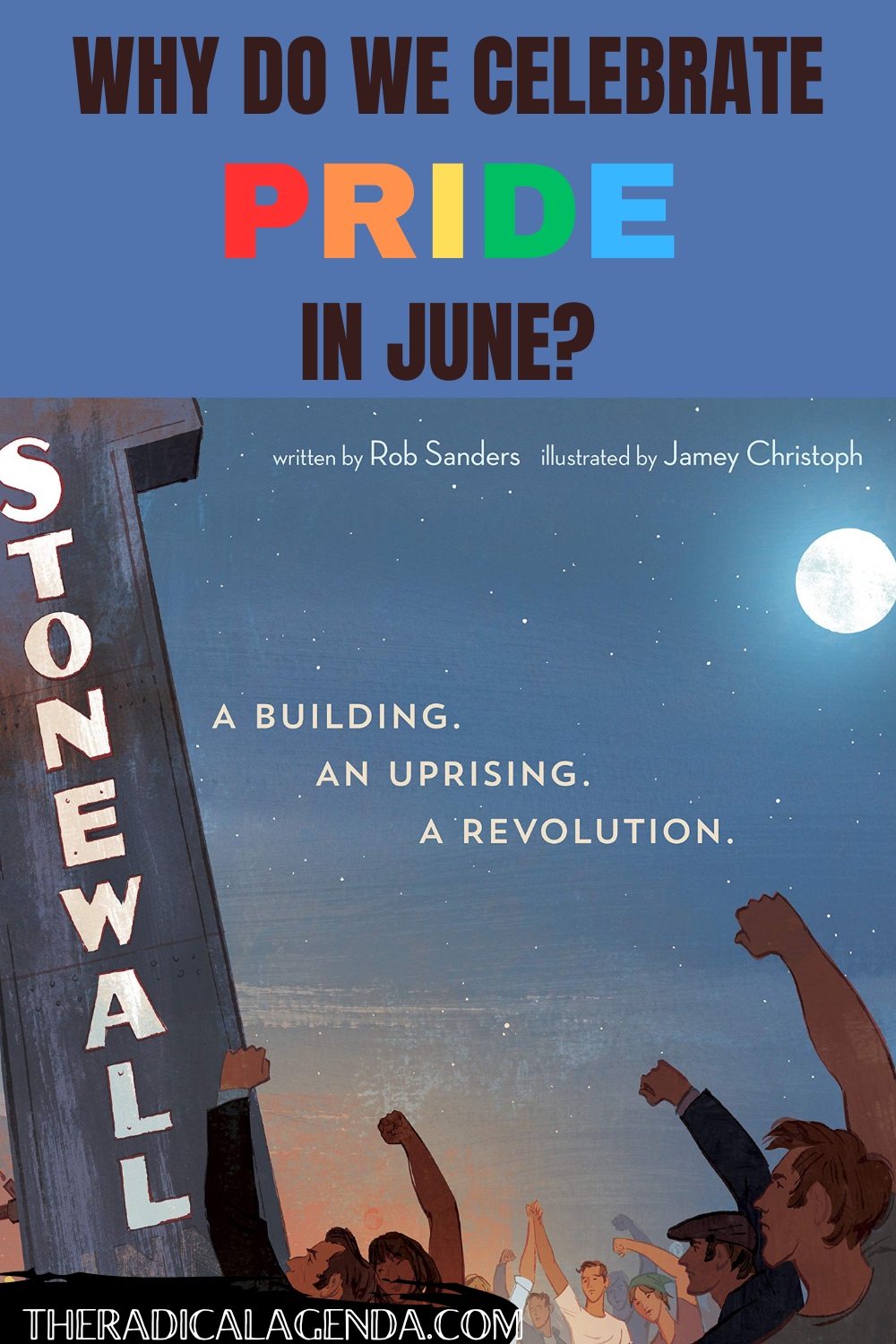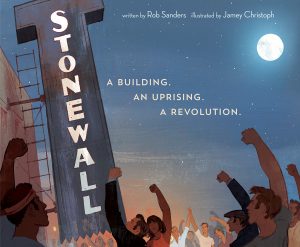The Radical Agenda may utilize affiliate links for recommended books and resources. This means we may earn a small commission from clicks or purchases through those links at no cost to you. We only recommend products and services we believe in. All opinions shared are entirely our own. Thank you for supporting The Radical Agenda!
Stonewall Uprising, Explained
Stonewall: A Building, An Uprising, A Revolution by Rob Sanders is a wonderfully child-appropriate way to tell the story of the Stonewall Uprising.
The Stonewall Uprising of 1969 was a pivotal moment in LGBTQ+ history, when the crowd inside the Stonewall Inn on the West side of New York City was raided by the police (raids of anything potentially not heterosexual were common of the time).
The author of this book (who also wrote a children’s biography about Pride Flag creator Harvey Milk) told the story in the most beautifully creative way. The entire book was from the perspective of the building itself – or rather, the original two buildings that were later joined together to make the Stonewall Inn. The first few pages review the history of the buildings, in all its many purposes and occupants and cultures.
Telling the story from the perspective of the buildings somehow makes the story less scary for children. It is more focused on the “view from above” the story, as members of the LGBTQ+ community decided it was time to stand up against violence together.

Themes
Create A Safe Space
“Belonging” is a huge theme throughout the story, beginning with the building uses through its history, being a safe place of acceptance and belonging for everyone, starting with horses and eventually transitioning to humans. The idea that within the walls of this building you were accepted was very important to the building in the story.
Stand Up to Injustice Together
One person by themselves could not have sustained the Uprising. One person could not have created the systemic change that was necessary. The catalyst for the LGBTQ movement was the Uprising, where people stood up to injustice together and refused to back down. I think it’s a very important thing to show children that yes, while one person can make a huge difference (like Harriet Tubman or Georgia Gilmore), it takes a whole group of people willing to stand together to create a better world for all people.
Conversations
There was a page in the book that talked about how it was dangerous to be open about your sexuality if you were not heterosexual, and the author mentioned that people risked being fired or kicked out of their homes. My oldest remarked that he would rather be kicked out of his house than not be his authentic self, and I promised him that I would never kick him out of the house for loving another consenting person his age. He snuggled into his bed and said, “I know, Mommy, I’m safe to be myself.”
Whoever he ends up becoming and whoever he ends up loving, I’m glad he feels safe to be his authentic self in our home. My goal is that they feel safe and also their friends feel safe in our home.
Age Level
This book is appropriate for elementary aged kids. My preschooler wasn’t very into it.
Stitch by Stitch: Elizabeth Hobbs Keckly Sews Her Way to Freedom
Elizabeth Hobbs Keckly Reading these books is truly a gift. Stitch by Stitch introduces the world to Elizabeth Hobbs Keckly, and her story is truly remarkable. Born to enslaved parents, she started working for her enslavers by age four. She was trained to be a...
Turning Pages: My Life Story {Sonia Sotomayor}
The First Latina Supreme Court Justice Ever since we read the story of Wong Kim Ark and my children noticed that the Supreme Court at that time was "all white men, Mom!" my kids have been fascinated with books about the Supreme Court justices who don't fit that...
Let The Truth Be Told {Ida B. Wells}
Ida B. Wells was a Powerhouse Ida B. Wells: Let the Truth Be Told by Walter Dean Myers is one of our new favorite books, both because Ida B. Wells was an absolute powerhouse of a woman and also because it helped my children place all sorts of other people and events...


0 Comments